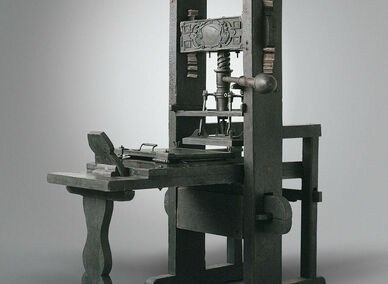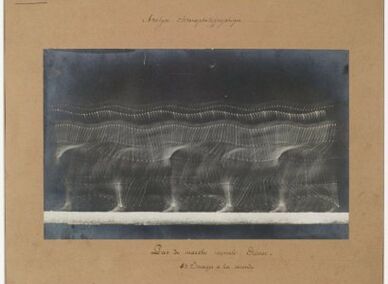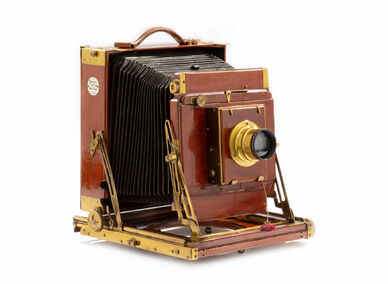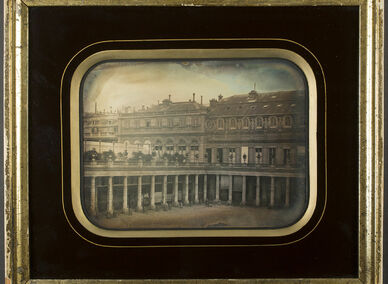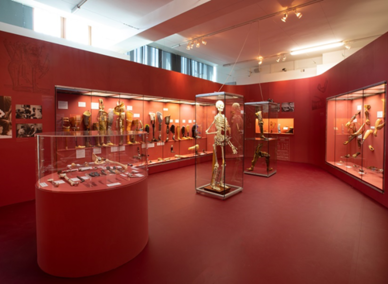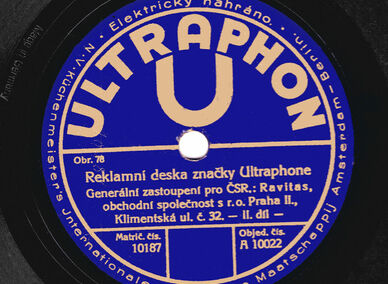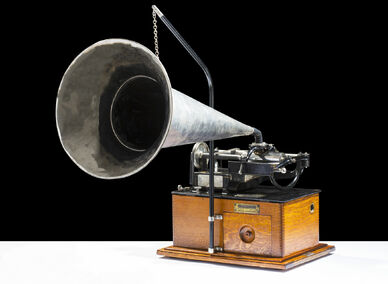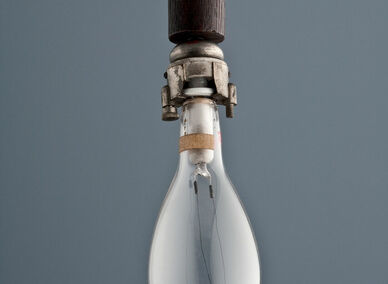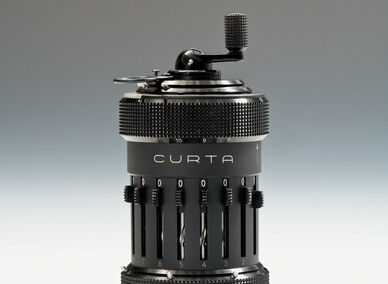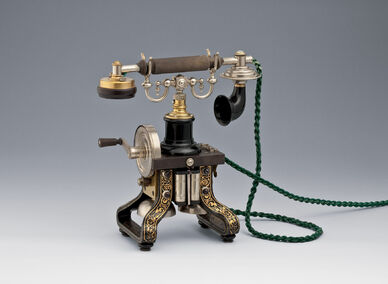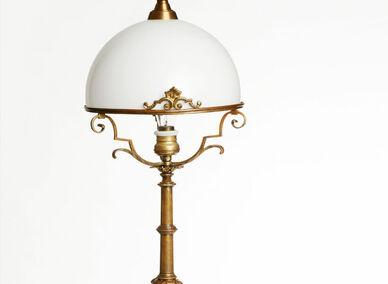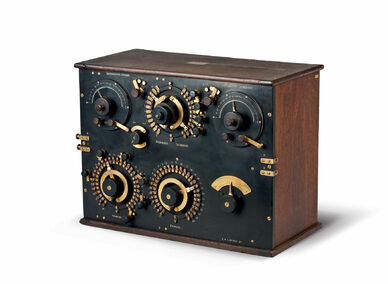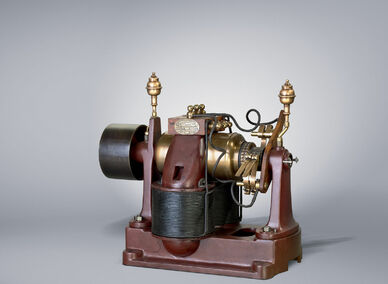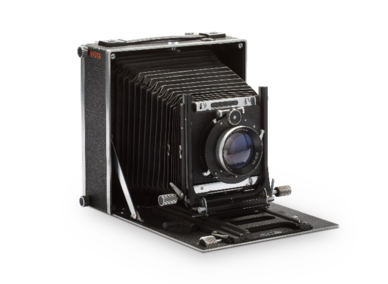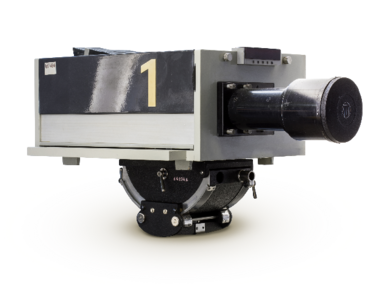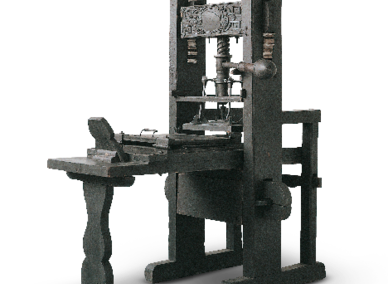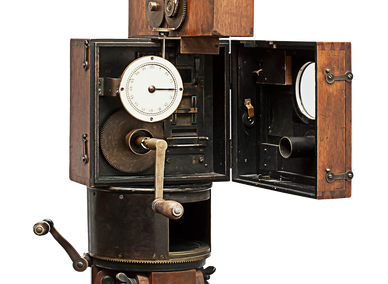Electrotechnical and Media museum
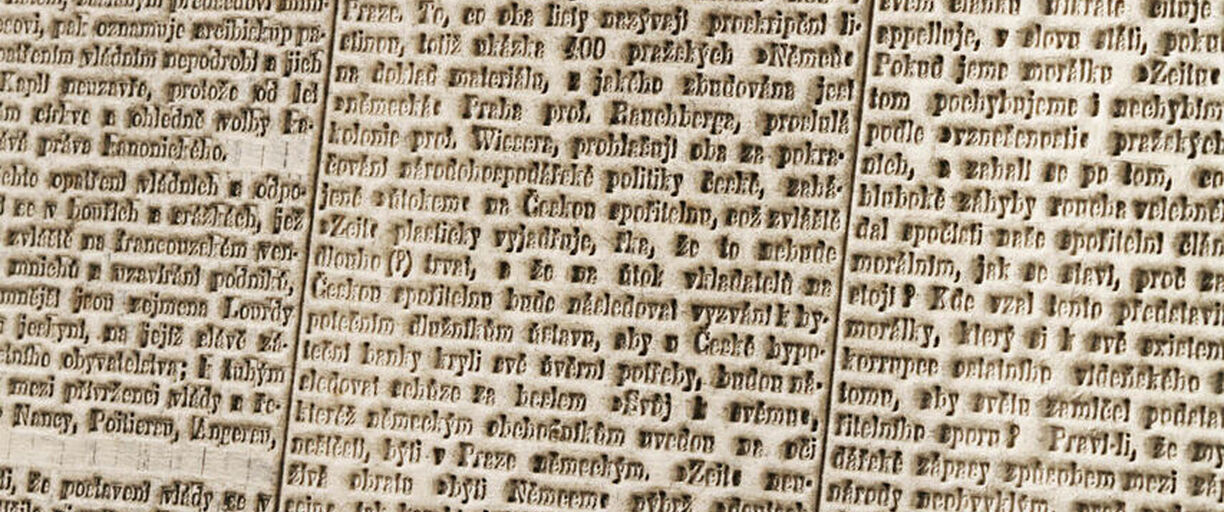
The Museum of Electrical Engineering and Media manages the largest number of collected items from the collection of the National Technical Museum. It consists of the Department of Electrical Engineering, Computer Science and Acoustics, the Department of Exact Sciences, the Department of Photographic and Film Technology, the Department of Printing and the Department of Medical Technology.
The NTM Museum of Electrical Engineering and Media (MEEM) was established by an organizational change on 1 February 2012 (ID: NTM No. 1317/2011 dated 1 January 2012). Based on this change, the departments of electrical engineering, computer science and acoustics, the department of photographic and film technology and the department of printing were united under one overarching museum unit. In 2018, a collection of medical technology was added, and as the last so far, the collection of exact sciences was transferred to MEEM in 2021. MEEM also manages the Printing, Astronomy, Intercamera and Photography Studio exhibitions. It is involved in the preparations for the new Museum of Railway and Electrical Engineering at Masaryk Station. The exhibition of the Museum of Photography and Modern Visual Media in Jindřichův Hradec has also been significantly enriched by a loan from the collection of MEEM’s photography and cinema department. Collection items from the departments of electrical engineering, computer science and acoustics represent a significant part of the exhibition of the Power Plant museum in the Royal City of Písek.
The beginnings of the departments’ collections
The individual specialist groups of the Technical Museum of the Czech Kingdom have become the basis of today's collection departments. In 1911, a graphics department was established, which included photography, graphic techniques, printing and bookmaking. In 1923, a separate photography and cinematography group was established. From 1924, Jindřich Brichta, a versatile filmmaker and one of the oldest Czech cameramen, who had good contacts abroad and inside the country, worked in this group. The objects acquired by him are among the most valuable that the photographic and film technology department has in its collections.
The collection of polygraphs was created in the period prior to Second World War from two sources. The older part comes from the collections of the Czech Industrial Museum, founded by Vojtěch Náprstek, in which graphic collections were created from the 1870s onwards; the second part is based on the original collections of the Technical Museum, which were created from 1911 onwards. The two collections were definitively merged in 1944.
Electrical engineering as a field has been represented in the museum from the very beginning. It was possible early on to acquire objects from the first significant donors, e.g. Elektrotechnicka a.s., formerly known as Kolben and Co, the Prague City Electrical Enterprises, the Electrical Engineering Plant of František Křižík in Karlín, and others. Due to the growing range of electrical engineering, it was already impossible back then to acquire the complete development series of products in all fields. For this reason, in 1915 the Electrical Engineering Department was divided into several sections: low voltage, high voltage, telegraphy and telephony. In 1917, a separate department focused on the "Development of electric lighting" was established. In 1925, a permanent exhibition of electric light and its sources was opened. The newly emerging collection of transmitting and receiving radio lamps with factory production procedures of the Elektra three-electrode lamp also joined the group.
Already in 1910, the geodetic group of the Technical Museum for the Czech Kingdom was founded, which became the basis of today's Department of Exact Sciences. The geodesist František Fiala was part of its inception with his collection of maps and instruments for astronomy and geodesy, which he donated to the museum. At the very beginning of the museum in 1911, the collecting activity was supported by the purchase of a collection of Habermel’s instruments from the period of Rudolf II at an auction in Amsterdam. Since 1914, a part of the geodesy collection has been installed in the Schwarzenberg Palace as a permanent exhibition in an area of 50 m2. Other activities of the department included organizing several exhibitions of its collection of maps. The first permanent exhibition of astronomy was opened under the auspices of the Czechoslovak Astronomical Society in 1923 in the then headquarters of the museum on Hradčanské náměstí.
The Department of Medical Technology was established on the basis of the decision of the Director General of the National Technical Museum, Karel Ksandr, on 1 March 2018, in connection with the exhibition Man-made Man - Technology and Medicine.
Collection activities
Professional staff of all departments of MEM systematically process the collections entrusted to the NTM and supplement them according to the current concepts of collection creation. The main source of collection funds are acquisitions offered by individuals, institutions and manufacturing companies, but also one's own purposeful collecting activities. Another activity is the provision of loans of collection items for exhibitions in other museums and institutions, as well as expert consultations for interested members of the public.
Scientific research and publishing activities
The scientific activities of MEEM professionals lead to a deepening of knowledge about the development of individual fields, their role in the terms of their historical and social context, and to a closer identification of individual subjects. Their research activities also take place within the framework of grant projects (e.g. NAKI and DK RVO – National and Cultural Identify and Long-term Conceptual Development offered by the Ministry of Culture). MEEM employees publish several professional articles and publications every year. In 2021, the Beauty of Historical Photography series was created, in which the monograph on the photographer and journalist Přemysl Koblic and A History of Colour Photography have been published to date. The editorial plan also includes publications on organized Czech amateur photography, on the photographers Josef Bink, Karl Šmirous and Rudolf Paďouk, a publication on the History of Black-and-White Classic Analog Photography and the NTM collection, and Colour photography of the 19th century. As part of the NAKI Historical Photography project, a methodology was developed entitled Preventive care, storage, installation and protection of historical photographic material and the publication The Face of the Industrial Age: Poldi – the People and Their Factory was published. The publications Ultraphon: the triumph of the Czech gramophone industry and the catalogues of the NTM’s collections on the Czechoslovak Radio Receiver 1923–1930, Czechoslovak Gramophones 1946–1993 and the NTM Phonograph Collection were all published within the electrical engineering group. Within the group of exact sciences, the publication Czech manufacturers of instruments for astronomy and geodesy is currently being prepared.
Exhibitions and presentation activities
In recent years, MEEM’s professional staff have prepared exhibitions (including critical catalogues) 100 years is just the beginning – Czech Radio 1923–2023; How the World Is Measured; The Glory of Amateur Photography: Organized Amateur Photography 1889–1955; Czech cinematographer: The Dawning of the Film Industry (1896–1930) and 300 years of Müller's Map of Bohemia. Some of the other exhibitions worth mentioning are Man-Made Man; From Flame to LED: the Evolution of Electric Light in the NTM collections; Music in a Spiral; and 60 years of Czech Television.
MEEM’s professional staff regularly participate in international and domestic professional conferences. A symposium on the history of geodesy and cartography is also organized every year. In 2022, a series of seminars on the History of the Gramophone Industry was launched. Several times a year, photographic workshops of old photographic processes are organised for the general public (for example, salted paper, cyanotypes, etc.). There are also regular meetings of the Friends of Historical Photographic Techniques. MEEM staff also present the results of their professional activities through contributions on radio and television.
Photographic studio
The development of photography, its application and influence on society.
Television Studio
The Television studio is situated oin the 3rd floor of the National Technical Museum. The…
Printing
The journeys of polygraphy from Gutenberg to digital printing.

